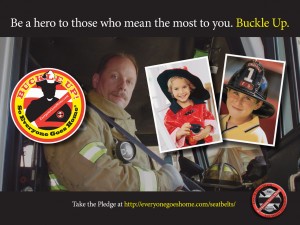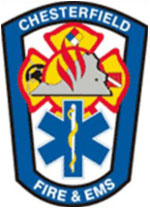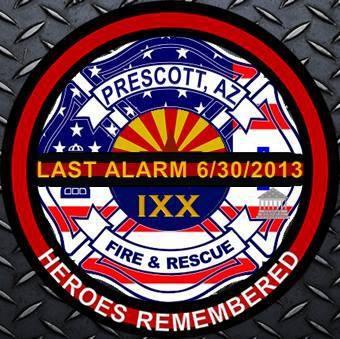By: Robert Avsec, Executive Fire Officer
Reducing firefighter deaths and injuries is, or should be, a top priority for all fire departments in the USA in 2014. The 16 Lifesafety  Initiatives from Everyone Goes Home provide the framework for a department to develop strategies for making the job of a firefighter safer, more effective, and more efficient. The white paper for Initiative #1—Cultural Change begins by stating:
Initiatives from Everyone Goes Home provide the framework for a department to develop strategies for making the job of a firefighter safer, more effective, and more efficient. The white paper for Initiative #1—Cultural Change begins by stating:
Define and advocate the need for a cultural change within the fire service relating to safety; incorporating leadership, management, supervision, accountability and personal responsibility.
The white paper for Initiative #5—Training and Certification begins with the following statement:
Develop and implement national standards for training, qualifications, and certification (including regular recertification) that are equally applicable to all firefighters based on the duties they are expected to perform.
Both documents provide a wealth of information for a department to develop strategies and implementation objectives to improve firefighter safety. In the following diagram and discussion, we’ll take a look at a “quick action guide” that a department’s leadership may find useful in communicating those strategies and objectives with its people.
Job Responsibilities
Every job in a department should have a detailed job description of the tasks that a person will be expected to carry out when in that position. The job description should include sections for:
- Essential job functions;
- Required knowledge, skills, and abilities;
- Minimum qualifications; and
- Essential physical capabilities.
See Related: Firefighter Job Description—Chandler, AZ
Authority to Do the Job
Think of this as the “licensure” aspect. In the Job Responsibilities, a department outlines what a job entails, e.g., what a firefighter is expected to do. It is then up to the department to outline the required training and certification that the department will provide, or the individual must obtain, in order to become qualified to fill the position. For example, a department requires that a person complete a training program that complies with NFPA 1001: Standard for Fire Fighter Professional Qualifications to fill the position of firefighter.
Completing certification training, however, should only be the first step in a person filling a job position. The second phase should be demonstrating competency for the acquired knowledge, skills, and abilities within the framework of the department’s Standard Operating Guidelines. Many departments already have a form of this competency evaluation, e.g., an evaluation for a firefighter to move from probationary status to full-member status.
Departmental leaders for organization that provide EMS are very familiar with this concept of licensure. After a member successfully completes their basic EMT or Paramedic training they typically cannot actively provide patient care in the field until they’ve been granted the authority to do so by the organization’s Operational Medical Director (OMD).
Now some OMDs are more engaged in this process than others for sure. Many simply “rubber-stamp” the “newly minted” BLS (Basic Life Support) or ALS (Advanced Life Support) provider and “away they go” to provide patient care under the OMD’s medical license. In the department that I served for 26 years, Chesterfield County (VA) Fire and EMS, it was a much different story for new ALS providers.
When a firefighter had successfully completed their paramedic training and received proof of certification they would be assigned to an experienced ALS provider who served as their Preceptor. The new ALS provider, i.e., the Preceptee, was expected to ride as the third person on one of the department’s 24-hour ambulances—with their Preceptor as part of the crew as well—for ten 24-hour tours. The new ALS provider would provide all patient care and complete the required patient care documentation; after each call, or before the end of the tour, the Preceptor was responsible for reviewing the care provided and the documentation and give feedback for reinforcement or improvement to their Preceptee.
experienced ALS provider who served as their Preceptor. The new ALS provider, i.e., the Preceptee, was expected to ride as the third person on one of the department’s 24-hour ambulances—with their Preceptor as part of the crew as well—for ten 24-hour tours. The new ALS provider would provide all patient care and complete the required patient care documentation; after each call, or before the end of the tour, the Preceptor was responsible for reviewing the care provided and the documentation and give feedback for reinforcement or improvement to their Preceptee.
The Preceptee would ride with their Primary Preceptor for at least the first two tours and the last two tours. In between, they would be assigned to ride with other Preceptors to gain a variety of experiences and perspectives from those other Preceptors. Following the completion of their ten tours, the Preceptee’s “package” of completed runs sheets and Preceptor evaluations would go to the OMD for their “blessing” of the new ALS provider.
(For those personnel hired who prior ALS certification and experience, there was an expedited process that called for only five 24-hour tours of duty with a Preceptor).
A “licensure” process should be a part of every position in the organization from a probationary member to the head of the organization.
Accountability for Job Performance
In other professions that require licensure, e.g., doctors, nurses, hair stylists, etc., failure to adhere to job performance standards can result in sanctions that can ultimately lead to revocation of a license. When an individual is “licensed” by the organization to perform a job, e.g., serve as the company officer of an engine company, they should be informed and educated as to the potential consequences for failure to fulfill the performance requirements of the job.
For example, one of a company officer’s job responsibilities is to manage the initial response to a structure fire. If that fire company responds to a structure fire and the officer fails to conduct a size-up of the incident according to the department’s SOG, there must be a progressive course of discipline that helps the officer to understand:
- How their actions were non-compliant with the SOG;
- How their actions should be modified in the future so that they are compliant with the SOG; and
- What future sanctions are possible for future non-compliance with the SOG.
(My usage of the word “discipline” in this discussion is based on this definition from Merriam-Webster Dictionary on-line: a rule or system of rules governing conduct or activity).
The organization’s system of discipline should show a range of sanctions that escalate with continued non-acceptable job performance. The range of possible sanctions should include the revocation of an individual’s “license” to perform a job, i.e., reduction in rank from company officer to that of firefighter.
Think of it this way. How safe would our highways and roads be if there were no sanctions on drivers who did not operate their motor vehicles according to the applicable laws? Every person who obtains a driver’s license knows—or should know!—how many driving infraction points (sanctions) will result in the suspension or revocation of their license to operate a motor vehicle.
 Fire & EMS Leader Pro The job of old firefighters is to teach young firefighters how to become old firefighters!
Fire & EMS Leader Pro The job of old firefighters is to teach young firefighters how to become old firefighters!

